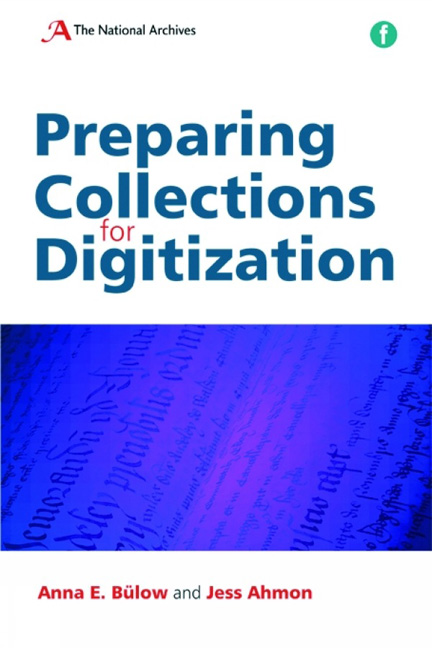Book contents
- Frontmatter
- Contents
- Acknowledgements
- List of figures and tables
- Introduction
- 1 Digitization in the context of collection management
- 2 Before you digitize: resources, suppliers and surrogates
- 3 The digital image Ross Spencer
- 4 The process of selection
- 5 Surveying collections
- 6 Equipment for image capture
- 7 Preparation of document formats and fastenings
- 8 Preparation of damaged documents
- 9 Setting up the imaging operation
- Conclusion
- Further reading
- Index
3 - The digital image Ross Spencer
Published online by Cambridge University Press: 08 June 2018
- Frontmatter
- Contents
- Acknowledgements
- List of figures and tables
- Introduction
- 1 Digitization in the context of collection management
- 2 Before you digitize: resources, suppliers and surrogates
- 3 The digital image Ross Spencer
- 4 The process of selection
- 5 Surveying collections
- 6 Equipment for image capture
- 7 Preparation of document formats and fastenings
- 8 Preparation of damaged documents
- 9 Setting up the imaging operation
- Conclusion
- Further reading
- Index
Summary
Introduction
Developing a technical specification for digital images is one of the numerous issues alluded to in Chapter 2 ‘Before you digitize: resources, suppliers and surrogates’. The way in which the images are to be used will determine the specification of the digital files. Usage amongst other things affects decisions about access, storage and image quality. Performance requirements of a delivery mechanism might dictate one file format over another in the short term but planning might want to take into account the alternatives as time moves on and performance becomes less of an issue with more capable and more powerful computer systems.
Digital images available for widespread use complement academic research; they provide an unprecedented level of access to documents and objects where it might not normally be possible to get access or to view them in such great detail. In some cases, highlighted by Prescott (2008), digital images can reveal details that cannot be seen by the naked eye. Digital images mean that users are better able to study documents that edited manuscripts cannot provide and where handling the original comes at too great a cost to be allowed.
The best possible image must be available for study, and for preservation purposes it is important that redigitization should be done rarely, if at all. From that point of view the two objectives are mutually inclusive. Indeed, when you are digitizing records where the original paper copy is extremely fragile, physical access might be limited for very good reason and redigitizing might not physically be possible – and thus the best possible image specification and image capture must be outlined and achieved the first time around. This much is paramount.
Within this chapter we hope to cover the majority of the options available to those embarking on digitization projects including looking at the basic concepts of digital images, their use, the options available after processing and what choices digital curators are likely to have to make to give them a satisfactory result that will last long into the future. Specifics concerning the actual image capturing equipment are discussed in Chapter 6 ‘Equipment for image capture’.
- Type
- Chapter
- Information
- Preparing Collections for Digitization , pp. 33 - 46Publisher: FacetPrint publication year: 2010



